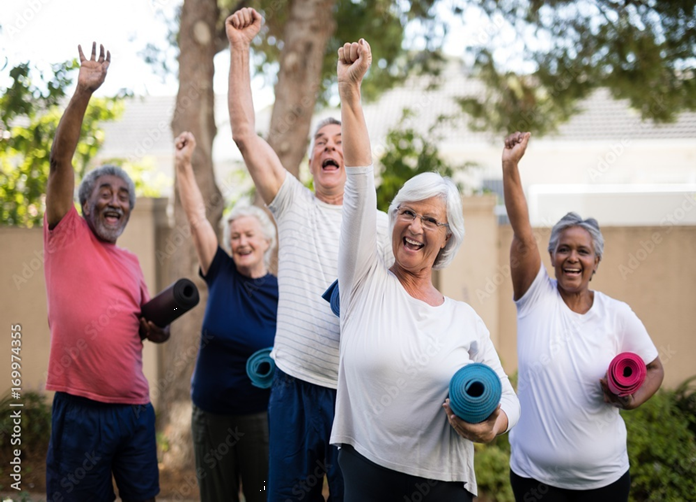FINDING A PAIN FREE AND ACTIVE LIFE
KEEP IT MOVING !!!
Finding a Pain-Free and Active Life By Dr. Alan M. Reznik
Movement as Medicine
A big theme of the conversation was how important it is to move—intentionally and regularly. “Most people think if something hurts, they need to stop using it,” said Dr. Reznik. “But quite the opposite is often true. Joints and muscles need movement to stay strong, lubricated, and functional.” He emphasized that you don’t need to take up running marathons to improve your health.
In fact, these small daily routines can make a big difference:
Strengthen the muscles around your joints (like the quads for knees and rotator cuff for shoulders).
Use resistance bands or light weights at home.
Take short walks throughout the day to improve circulation and reduce stiffness
Preventing Falls Before They Happen
Dr. Reznik also spoke about fall prevention, which is a major concern for older adults. His book I’ve Fallen, and I Can Get Up offers practical guidance for reducing fall risks and recovering confidently if a fall does occur. “Falls are one of the leading causes of injury as we age, but they’re often preventable,” Dr. Reznik noted. “A little planning and a few smart changes can go a long way.”
Some of his top recommendations include:
Remove loose rugs and clutter from walkways.
Install grab bars in bathrooms.
Improve lighting throughout the home.
Practice balance exercises, such as standing on one foot or gentle tai chi.
Teamwork in Healthcare
Another important takeaway from the podcast was Dr. Reznik’s perspective on collaboration in healthcare. He stressed the importance of working closely with your physician, physical therapist, and even fitness professionals to build a plan that’s right for you. “It’s with the understanding of differing perspectives, combining disciplines, constant collaboration, and an open mind that one achieves the best path forward,” he shared. This approach not only empowers patients, it also creates better outcomes. Knowing your options and having the right support team helps you stay in control of your health journey.
Reclaiming an Active Life
Ultimately, Dr. Reznik offers a message of hope: you can take control of your joint health, reduce pain, and stay active longer than you might think. With simple, consistent effort—and the right guidance—aging doesn’t have to mean slowing down.
Whether you're already experiencing joint discomfort or just planning ahead, the tools are within reach. Because aging well isn’t just about living longer—it’s about living better. Whether you're already experiencing joint discomfort or just planning ahead, the tools are within reach.
"Lack of activity destroys the good condition of every human being, while movement and methodical physical exercise save it and preserve it.” – Plato

CELEBRATIONS AND WELCOMES!!
RESIDENT BIRTHDAYS STAFF BIRTHDAYS
MARION STAACK 8/1
ISABELLA BENIVENGA 8/26
ELWOOD ENGLISH 8/3
BEA JOHNSON 8/7
GERRY GOEHRING 8/13
ELLEN HALL 8/30


RESIDENT OF THE MONTH
ELWOOD ENGLISH
Welcome New Residents
LENA EHRET
The Long Straw Club
For the past 20 years, The Long Straw Club has been a cornerstone of our assisted living community, offering a deep and thoughtful exploration of the spiritual, emotional, and psychological dimensions of aging. Originally founded by noted gerontologist Robin Avery, the club has been guided by a diverse array of wisdom teachers - including rabbis, priests, ministers, and other spiritual leaders – who have helped members navigate the later chapters of life with insight and grace. Today, under the esteemed leadership of Lloppón Rinpoche, the Long Straw Club continues to foster meaningful discussions, personal reflection, and a sense of shared wisdom among its members. Please join us on the last Tuesday of every month.
**Join us for some SUMMER FAMILY FUN **
on Aug 16
FROM 11 AM TO 2 PM
RSVP AUG 8, 2025
HAMBURGERS/HOT DOGS
GAMES GALORE
HAVE FUN CELEBRATING
SUMMER WITH THE FAMILY!!






